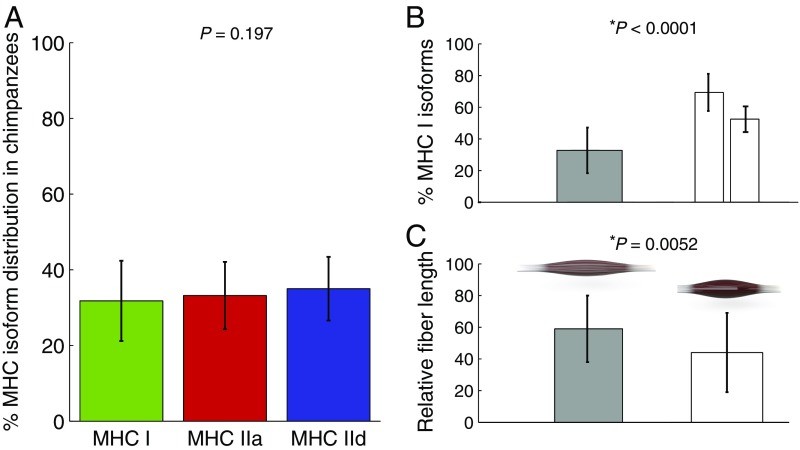Chimpanzees, our closest living relatives, are often perceived as possessing superhuman strength. But how much stronger are they really? This article delves into the science behind chimpanzee strength, comparing their muscle structure and performance to that of humans.
Alt text: A chimpanzee demonstrating its natural climbing ability, highlighting the importance of strength in its arboreal lifestyle.
Unraveling the Myth of “Super Strength”
While anecdotal evidence and early studies suggest a significant strength disparity, a comprehensive analysis reveals that chimpanzees are about 1.5 times stronger than humans, on average. This debunks the notion of “super strength” but still leaves the question: what makes them stronger?
Muscle Fiber Composition: The Key Differentiator
Research shows that the key difference lies not in the fundamental strength of individual muscle fibers but in their composition. Chimpanzees have a higher proportion of “fast-twitch” (MHC II) muscle fibers, approximately 67%, compared to humans. These fibers generate rapid, powerful contractions, contributing to explosive movements.
Humans, conversely, have a greater proportion of “slow-twitch” (MHC I) fibers, suited for endurance activities. This difference reflects the evolutionary divergence of humans and chimpanzees, with humans adapting for sustained activities like walking and running, while chimpanzees retained the power needed for climbing and swinging.
Force and Power Output: A Closer Look
Computer simulations, based on measured muscle properties, predict that chimpanzee muscle generates 1.35 times more dynamic force and power than human muscle of the same size. This aligns with observed performance differences in tasks like pulling and jumping.
Chimpanzees also possess longer muscle fibers, further enhancing their dynamic force and power capabilities. This advantage is particularly beneficial in activities requiring a wide range of motion.
Evolutionary Trade-offs: Strength vs. Endurance
The shift towards slow-twitch fibers in humans likely occurred alongside the development of bipedalism and endurance-based hunting strategies. While sacrificing peak strength, humans gained efficiency in long-distance locomotion and repetitive tasks. This trade-off highlights the adaptive nature of muscle evolution. The reduction in maximum dynamic force and power output in humans might have been driven by the need for repetitive, low-energy movements.
Conclusion: More Than Just Muscle
While chimpanzees possess a clear advantage in dynamic strength and power due to their muscle fiber composition and architecture, the difference is not as dramatic as often portrayed. The evolutionary journey of humans prioritized endurance over explosive power, resulting in a distinct muscular profile. This divergence reflects the unique adaptive pressures faced by each species. The 1.35-fold difference in dynamic strength and power underscores the evolutionary trade-off between power and endurance in primates. Future research could explore the role of neural control and other factors in contributing to the observed strength differences.
